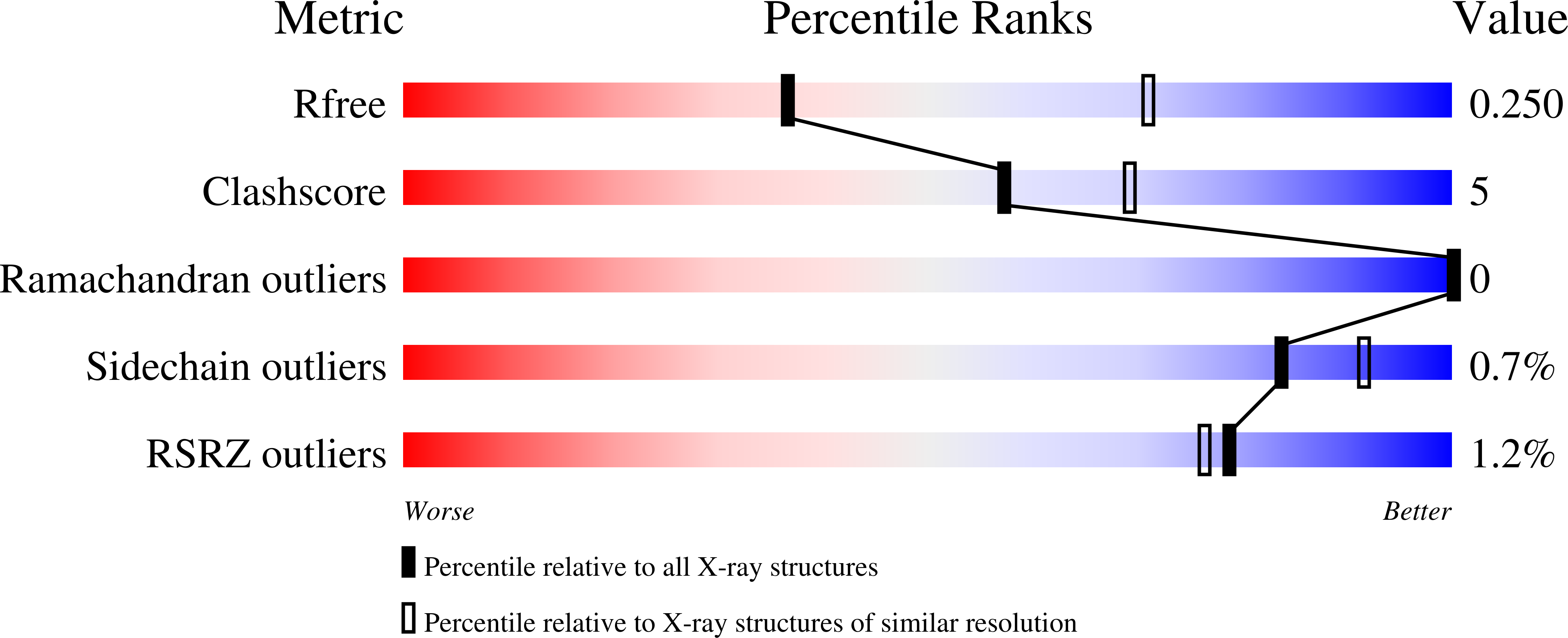Structural and biochemical characterization of iminodiacetate oxidase from Chelativorans sp. BNC1.
Kang, C., Jun, S.Y., Bravo, A.G., Vargas, E.M., Liu, H., Lewis, K.M., Xun, L.(2019) Mol Microbiol 112: 1863-1874
- PubMed: 31580513
- DOI: https://doi.org/10.1111/mmi.14399
- Primary Citation of Related Structures:
6PXS - PubMed Abstract:
Ethylenediaminetetraacetate (EDTA) is the most abundant organic pollutant in surface water because of its extensive usage and the recalcitrance of stable metal-EDTA complexes. A few bacteria including Chelativorans sp. BNC1 can degrade EDTA with a monooxygenase to ethylenediaminediacetate (EDDA) and then use iminodiacetate oxidase (IdaA) to further degrade EDDA into ethylenediamine in a two-step oxidation. To alleviate EDTA pollution into the environment, deciphering the mechanisms of the metabolizing enzymes is an imperative prerequisite for informed EDTA bioremediation. Although IdaA cannot oxidize glycine, the crystal structure of IdaA shows its tertiary and quaternary structures similar to those of glycine oxidases. All confirmed substrates, EDDA, ethylenediaminemonoacetate, iminodiacetate and sarcosine are secondary amines with at least one N-acetyl group. Each substrate was bound at the re-side face of the isoalloxazine ring in a solvent-connected cavity. The carboxyl group of the substrate was bound by Arg 265 and Arg 307 . The catalytic residue, Tyr 250 , is under the hydrogen bond network to facilitate its deprotonation acting as a general base, removing an acetate group of secondary amines as glyoxylate. Thus, IdaA is a secondary amine oxidase, and our findings improve understanding of molecular mechanism involved in the bioremediation of EDTA and the metabolism of secondary amines.
Organizational Affiliation:
Department of Chemistry, Washington State University, Pullman, WA, 99164-4630, USA.















